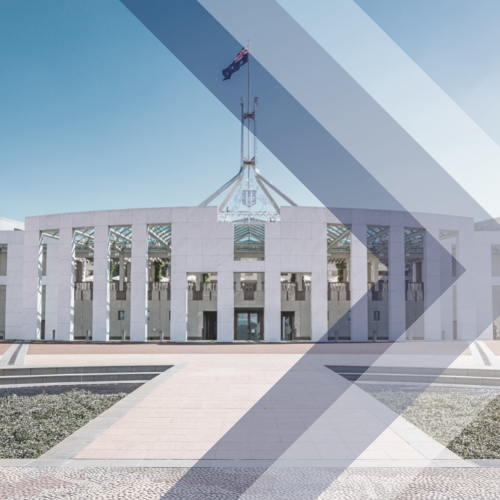Jim Chalmers as the newest Treasurer for Labor, handed down Labor’s first budget since 2013 to set the stage for the next two years in government.
Previous budgets resulting from Covid’s emergency measures to increase demand has increased Australia’s debt to just shy of $1 trillion. The Ukraine War has cause energy shortages which in turn have driven up inflation and commodity prices. However, Australia’s budget received unexpected windfalls of $22 billion and Labor has shown restraint and decided to “bank it, not spend it.”
Just weeks from the horror expansionary budget in the UK which tanked the UK Pound and caused a bond market selloff, Dr Jim Chalmers was careful not to repeat the UK’s mistakes.
An expansionary budget would lead to higher inflation, which would result in further interest rate increases from the RBA and cost of living increases across the board, recognising that most everyday Australian’s will lose out given the global backdrop as real wages will be negative.
The treasurer has instead opted for “highly targeted” cost of living relief for a few select groups who are feeling the pinch, including:
- Help for families – effective July 23, expect higher child care subsidies. Paid parental leave expanded, with an extra fortnight each year, up to the full 6 months’ leave from 2026.
- Cheaper medicine – effective January 2023, slashing the co-payment of scripts on the PBS.
- Cheaper housing – 30,000 new homes, help to buy scheme with lower deposit, lower eligibility age for downsizers. From 2024, a new “housing accord” to build 1,000,000 homes.
- Cheaper energy – plugging in more renewable energy into the nation’s electricity grid.
- Better pay and access to education – pay rises for award workers and aged care pay rises, and more fee-free TAFE positions and access to university for the disadvantaged.
Some other noteworthy points from the budget include:
- Clean energy initiatives – driving renewable energy in our regions by establishing a $20bn energy transmission fund and connect offshore windfarms. Cut Electric Vehicle (EV) taxes and establish a EV charging network, including all apartments.
- National Reconstruction Fund – $15bn will help finance projects that expand our industrial base, diversify our economy, create sustainable, well-paid jobs, and grow our regional centres. The focus is on clean energy manufacturing, medical manufacturing, new technologies, agriculture, and critical minerals.
- Natural disasters – $3bn response to recent floods and funding Disaster Relief Australia for 5,000 extra volunteers for future disasters. Up to $200m a year in disaster prevention via the Disaster Ready Fund.
- Infrastructure – investment pipeline of more than $120 billion in transport infrastructure over the next decade
- Health and Aged Care – $6.1bn allocated to hospitals and Medicare, and $2.5 billion for nurses and improving the quality of food in nursing homes.
Like with any Federal budget, there are always some losers, including:
- Energy subsidies have been ruled out, despite household energy prices expected to increase by 20 per cent in the second half of 2022 and a further 30 per cent in 2023-24
- Reduced government spending on external contractors, consultancies, advertising, travel and legal services – expecting to save the Budget $3.6 billion
- No real wage increase expected for Australian workers until 2024, and it will be quite flat ‘real’ growth.
- Inflation is causing Bracket creep and although stage 3 tax cuts are still committed to at this stage, a partial wind back is expected.
In terms of the key economic indicators, growth is forecast to fall in the 2023-24 year to 1.5 per cent, and unemployment is expected to increase from 3.5 per cent in 2022-23 to 4.5 per cent in 2023-24. Inflation is anticipated to peak at 7.75 per cent by end of this year. Australia still compares well to other developed nations, with Government Gross debt/GDP forecast to be 37.3 per cent in 2022-23.
What are some areas of the Budget likely to affect Evalesco clients?
- The eligible age to make “downsizer” contributions to superannuation will drop for the second time this year, from 60 to 55, in a move designed to free up houses for young people and families.
- Extended asset test exemption for pensioners who downsize their home from 12 to 24 months. An additional 12 month extension is available in special circumstances, such as building delays because of a natural disaster. The changes will reduce the deeming rate on home sale proceeds intended to buy a new home from 2.25% per year to 0.25%. During the exemption period, only the lower deeming rate will apply to the sale proceeds. The lower deeming rate is currently 0.25% per year.
- By 2026, expanded paid parental leave will offer 26 weeks of leave, up from 20 weeks, while childcare costs will be slashed from July 1 next year.
- For clients or their parents in aged care, the average number of minutes that nursing home residents receive care will rise to 215 minutes per resident, per day by October 2024. There’s also extra funding to increase the quality of food, and for facilities to manage the impact of COVID.
- The climate-related spending includes a “rewiring the nation” plan, designed to upgrade the electricity grid to ensure more renewables can be fed in. For those looking to purchase a new electric vehicle, there will no FBT on salary packaged electric cars under the luxury car threshold.
- And, for those with crypto currencies, going forward these will be taxed as an asset, subject to normal discounting and will not be treated as a foreign currency.
Contact advice@evalesco.focusedgrowth-dev1.com.au or your Financial Adviser to discuss any part of this year’s Federal Budget and how it may impact you.



